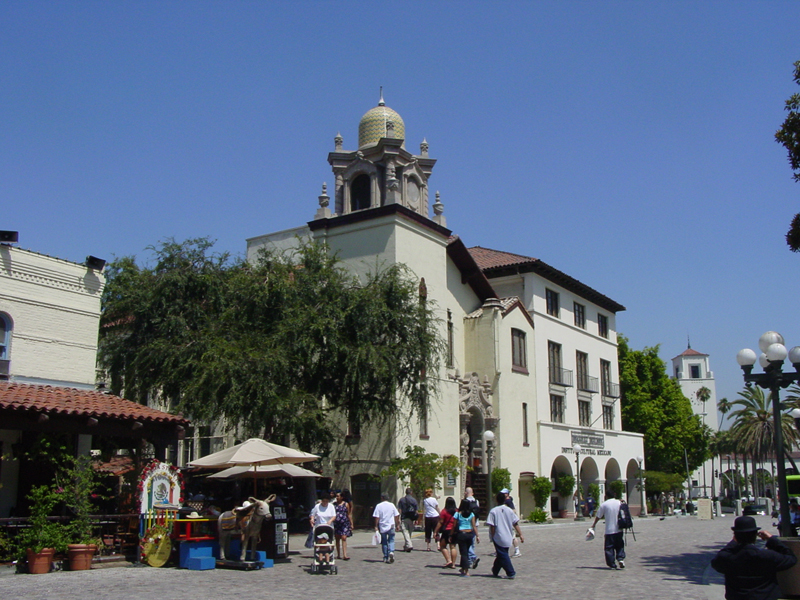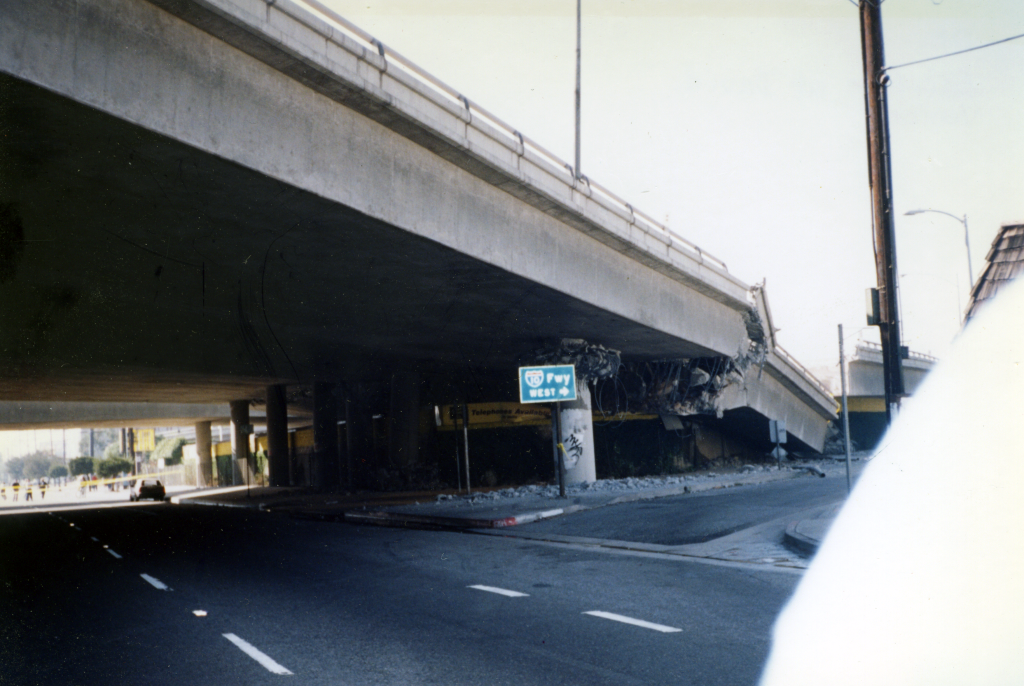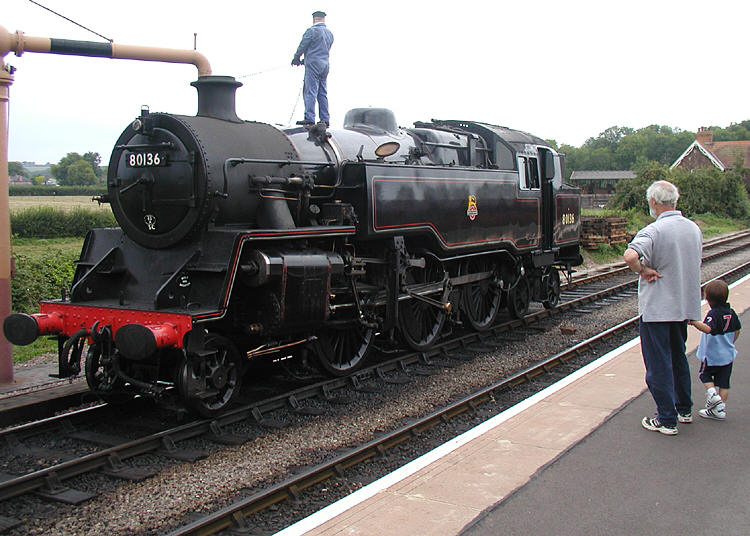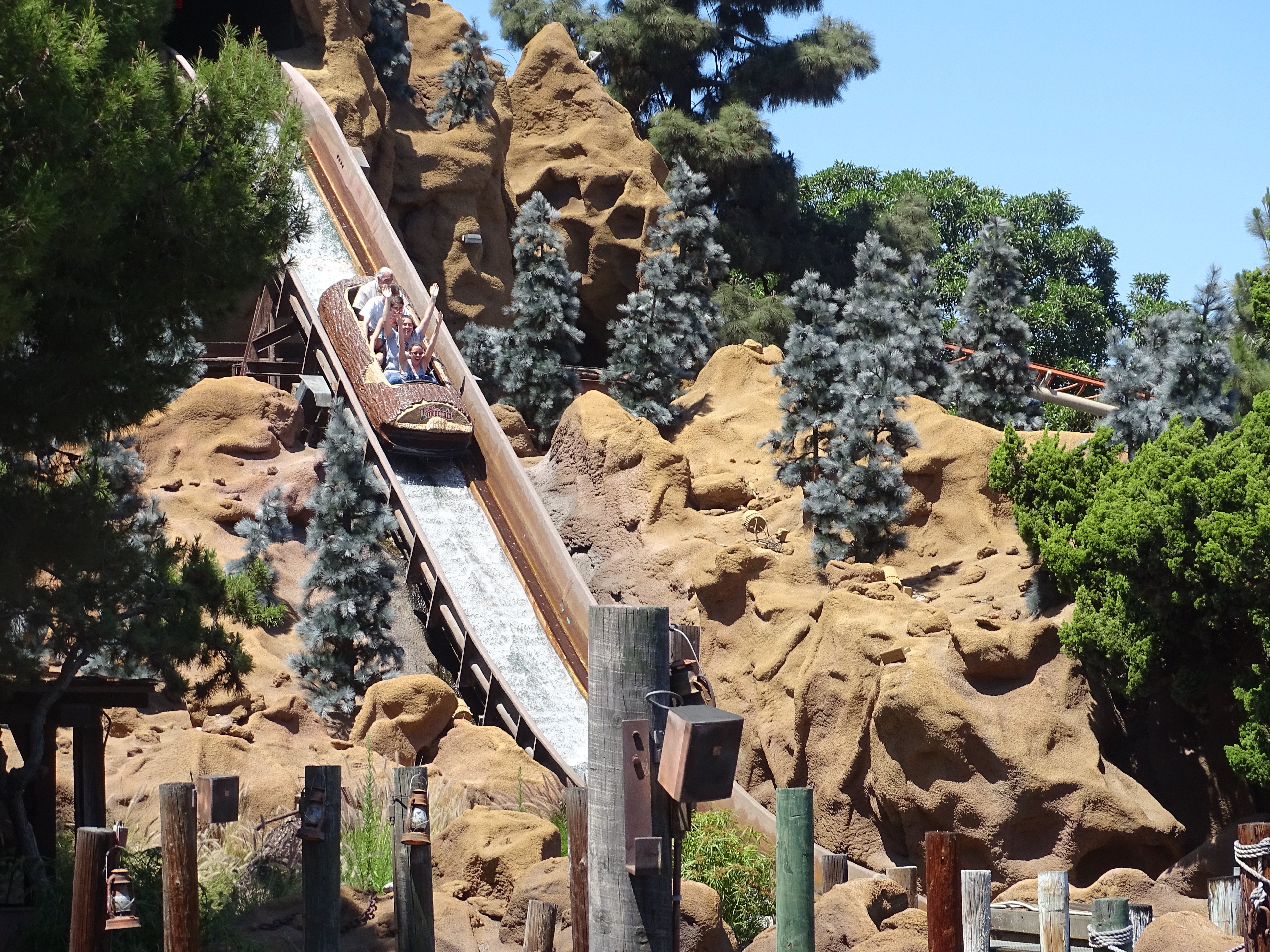|
Waterloo Mining Railroad
The Waterloo Mining Railroad, also known as the Calico Railroad or Daggett-Calico Railroad, was a narrow gauge railroad built to carry silver ore from the mines in the Calico Mountains north of Calico to the mills located at Elephant Mountain near Daggett, California, from 1888 to 1903. The American Borax Company leased, and later bought, a small length of the railroad to use for their borax mining operations near Lead Mountain in 1901, and the line managed to last for about another six years afterwards. During this time, it was referred to as the American Borax Company Railroad (or A.B.C. Railroad), and the Columbia Mine Railroad. History Silver mining In the 1880s, Calico was one of the most successful silver mining towns in Southern California, with a large town population of about 1,200. It had two silver mines, the Waterloo and Silver King, which produced about over $1,000,000 worth of silver ore in just 14 months. The Southern Pacific Railroad built a railroad line to the ... [...More Info...] [...Related Items...] OR: [Wikipedia] [Google] [Baidu] |
Calico Mining Crew Silver King2
Calico (; in British usage since 1505) is a heavy plain-woven textile made from unbleached, and often not fully processed, cotton. It may also contain unseparated husk parts. The fabric is far coarser than muslin, but less coarse and thick than canvas or denim. However, it is still very cheap owing to its unfinished and undyed appearance. The fabric was originally from the city of Calicut in southwestern India. It was made by the traditional weavers called cāliyans. The raw fabric was dyed and printed in bright hues, and calico prints became popular in Europe. History Origins Calico originated in Calicut, from which the name of the textile came, in South India, now Kerala, during the 11th century, where the cloth was known as "chaliyan". It was mentioned in Indian literature by the 12th century when the polymath and writer Hemachandra described calico fabric prints with a lotus design.''Encyclopædia Britannica'' (2008)"calico" Calico was woven using Gujarati co ... [...More Info...] [...Related Items...] OR: [Wikipedia] [Google] [Baidu] |
Los Angeles, California
Los Angeles ( ; es, Los Ángeles, link=no , ), often referred to by its initials L.A., is the largest city in the state of California and the second most populous city in the United States after New York City, as well as one of the world's most populous megacities. Los Angeles is the commercial, financial, and cultural center of Southern California. With a population of roughly 3.9 million residents within the city limits , Los Angeles is known for its Mediterranean climate, ethnic and cultural diversity, being the home of the Hollywood film industry, and its sprawling metropolitan area. The city of Los Angeles lies in a basin in Southern California adjacent to the Pacific Ocean in the west and extending through the Santa Monica Mountains and north into the San Fernando Valley, with the city bordering the San Gabriel Valley to it's east. It covers about , and is the county seat of Los Angeles County, which is the most populous county in the United States with ... [...More Info...] [...Related Items...] OR: [Wikipedia] [Google] [Baidu] |
Mining Railways In The United States
Mining is the extraction of valuable minerals or other geological materials from the Earth, usually from an ore body, lode, vein, seam, reef, or placer deposit. The exploitation of these deposits for raw material is based on the economic viability of investing in the equipment, labor, and energy required to extract, refine and transport the materials found at the mine to manufacturers who can use the material. Ores recovered by mining include metals, coal, oil shale, gemstones, limestone, chalk, dimension stone, rock salt, potash, gravel, and clay. Mining is required to obtain most materials that cannot be grown through agricultural processes, or feasibly created artificially in a laboratory or factory. Mining in a wider sense includes extraction of any non-renewable resource such as petroleum, natural gas, or even water. Modern mining processes involve prospecting for ore bodies, analysis of the profit potential of a proposed mine, extraction of the desired materials, and ... [...More Info...] [...Related Items...] OR: [Wikipedia] [Google] [Baidu] |
Defunct California Railroads
Defunct (no longer in use or active) may refer to: * ''Defunct'' (video game), 2014 * Zombie process or defunct process, in Unix-like operating systems See also * * :Former entities * End-of-life product * Obsolescence {{Disambiguation ... [...More Info...] [...Related Items...] OR: [Wikipedia] [Google] [Baidu] |
Interstate 10 In California
Interstate 10 (I-10) is a transcontinental Interstate Highway in the United States, stretching from Santa Monica, California to Jacksonville, Florida. The segment of I-10 in California runs east from Santa Monica through Los Angeles, San Bernardino, and Palm Springs before crossing into the state of Arizona. In the Greater Los Angeles area, it is known as the Santa Monica Freeway and the San Bernardino Freeway, linked by a short concurrency on I-5 (Golden State Freeway) at the East Los Angeles Interchange. I-10 also has parts designated as the Rosa Parks Freeway, the Redlands Freeway, and the Sonny Bono Memorial Freeway. Some parts were also formerly designated as the Christopher Columbus Transcontinental Highway. However, the California State Legislature removed this designation following the passage of a bill on August 31, 2022. I-10 is also known colloquially as "the 10" to Southern California residents . Route description The California Streets and Highways Code defines ... [...More Info...] [...Related Items...] OR: [Wikipedia] [Google] [Baidu] |
Calico And Odessa Railroad
The Calico & Odessa Railroad is a narrow gauge heritage railroad in the ghost town of Calico, California, headquartered in Yermo, California. It was named for the town and mountain range of Calico and the nearby Odessa Canyon. It is a remake of the narrow gauge Waterloo Mining Railroad, the original narrow gauge railroad line that hauled silver ore (and later borax) from Calico to the mills of Daggett in the 1880s, although the present-day tracks do not follow the trackbed of the original one. The railroad, like Calico itself, is now operated as a San Bernardino county historic park. Visitors to the park may take a short ride on the railroad for a fee. See also *List of heritage railroads in the United States This is a list of heritage railroads in the United States. There are currently no such railroads in the states of Mississippi or North Dakota. Heritage railroads by state Alabama * Heart of Dixie Railroad Museum, Shelby & Southern Railroad and ... References Exter ... [...More Info...] [...Related Items...] OR: [Wikipedia] [Google] [Baidu] |
Tourist Railroad
A heritage railway or heritage railroad (US usage) is a railway operated as living history to re-create or preserve railway scenes of the past. Heritage railways are often old railway lines preserved in a state depicting a period (or periods) in the history of rail transport. Definition The British Office of Rail and Road defines heritage railways as follows:...'lines of local interest', museum railways or tourist railways that have retained or assumed the character and appearance and operating practices of railways of former times. Several lines that operate in isolation provide genuine transport facilities, providing community links. Most lines constitute tourist or educational attractions in their own right. Much of the rolling stock and other equipment used on these systems is original and is of historic value in its own right. Many systems aim to replicate both the look and operating practices of historic former railways companies. Infrastructure Heritage railway lines ... [...More Info...] [...Related Items...] OR: [Wikipedia] [Google] [Baidu] |
Knott's Berry Farm
Knott's Berry Farm is a theme park located in Buena Park, California, owned and operated by Cedar Fair. In 2015, it was the twelfth-most-visited theme park in North America and averages approximately 4 million visitors per year. It features 40 rides including roller coasters, family rides, dark rides, and water rides. The park began in the 1923s as a roadside berry stand run by Walter Knott along State Route 39 in California. By the 1940s, a restaurant, several shops, and other attractions had been constructed on the property to entertain a growing number of visitors, including a replica ghost town. The site continued its transformation into a modern amusement park over the next two decades, and an admission charge was added in 1968. In 1997, the park was sold to Cedar Fair for $300 million, just two years after the Knott's food business was acquired by ConAgra, Inc. in 1995. History Origin The park sits on the site of a former berry farm established by Walter Knott and ... [...More Info...] [...Related Items...] OR: [Wikipedia] [Google] [Baidu] |
Walter Knott
Walter Marvin Knott (December 11, 1889 – December 3, 1981) was an American farmer who created the Knott's Berry Farm amusement park in California, introduced the Boysenberry, and made Knott's Berry Farm boysenberry preserves. Early life On December 11, 1889, Knott was born in San Bernardino, California. Knott's father was Elgin Charles Knott, a reverend originally from Tennessee. Knott's mother was Margaret Virginia Daugherty. Knott grew up in Pomona, California. Career In the 1920s, Knott was a somewhat unsuccessful farmer whose fortunes changed when he nursed several abandoned berry plants back to health. The hybrid boysenberry, named after its creator, Rudolph Boysen, was a cross between a blackberry, red raspberry and loganberry. The huge berries were a hit, and the Knott family sold berries, preserves and pies from a Buena Park, California roadside stand. In 1934, Knott's wife Cordelia (née Hornaday, January 23, 1890 – April 12, 1974) began serving fried chicken dinn ... [...More Info...] [...Related Items...] OR: [Wikipedia] [Google] [Baidu] |
Calico Train
Calico (; in British usage since 1505) is a heavy plain-woven textile made from unbleached, and often not fully processed, cotton. It may also contain unseparated husk parts. The fabric is far coarser than muslin, but less coarse and thick than canvas or denim. However, it is still very cheap owing to its unfinished and undyed appearance. The fabric was originally from the city of Calicut in southwestern India. It was made by the traditional weavers called cāliyans. The raw fabric was dyed and printed in bright hues, and calico prints became popular in Europe. History Origins Calico originated in Calicut, from which the name of the textile came, in South India, now Kerala, during the 11th century, where the cloth was known as "chaliyan". It was mentioned in Indian literature by the 12th century when the polymath and writer Hemachandra described calico fabric prints with a lotus design.''Encyclopædia Britannica'' (2008)"calico" Calico was woven using Gujarati cotton from Su ... [...More Info...] [...Related Items...] OR: [Wikipedia] [Google] [Baidu] |
Carson City, Nevada
Carson City is an independent city and the capital of the U.S. state of Nevada. As of the 2020 census, the population was 58,639, making it the sixth largest city in Nevada. The majority of the city's population lives in Eagle Valley, on the eastern edge of the Carson Range, a branch of the Sierra Nevada, about south of Reno. The city is named after the mountain man Kit Carson. The town began as a stopover for California-bound immigrants, but developed into a city with the Comstock Lode, a silver strike in the mountains to the northeast. The city has served as Nevada's capital since statehood in 1864; for much of its history it was a hub for the Virginia and Truckee Railroad, although the tracks were removed in 1950. Before 1969, Carson City was the county seat of Ormsby County. That year the state legislature abolished the county and included its territory into a revised city charter for a Consolidated Municipality of Carson City. With the consolidation, the city limi ... [...More Info...] [...Related Items...] OR: [Wikipedia] [Google] [Baidu] |
Virginia & Truckee Railroad
The Virginia and Truckee Railroad is a privately owned heritage railroad, headquartered in Virginia City, Nevada. Its private and publicly owned route is long. When first constructed in the 19th century, it was a commercial freight railroad which was originally built to serve the Comstock Lode mining communities of northwestern Nevada. At its height, the railroad's route ran from Reno south to the state capital at Carson City. In Carson City, the mainline split into two branches. One branch continued south to Minden, while the other branch traveled east to Virginia City. The first section from Virginia City to Carson City was constructed beginning in 1869 to haul ore, lumber and supplies for the Comstock Lode silver mines. The railroad was abandoned in 1950 after years of declining revenue. Much of the track was pulled up and sold, along with the remaining locomotives and cars. In the 1970s, with public interest in historic railroads on the rise, efforts began to rebuild t ... [...More Info...] [...Related Items...] OR: [Wikipedia] [Google] [Baidu] |








